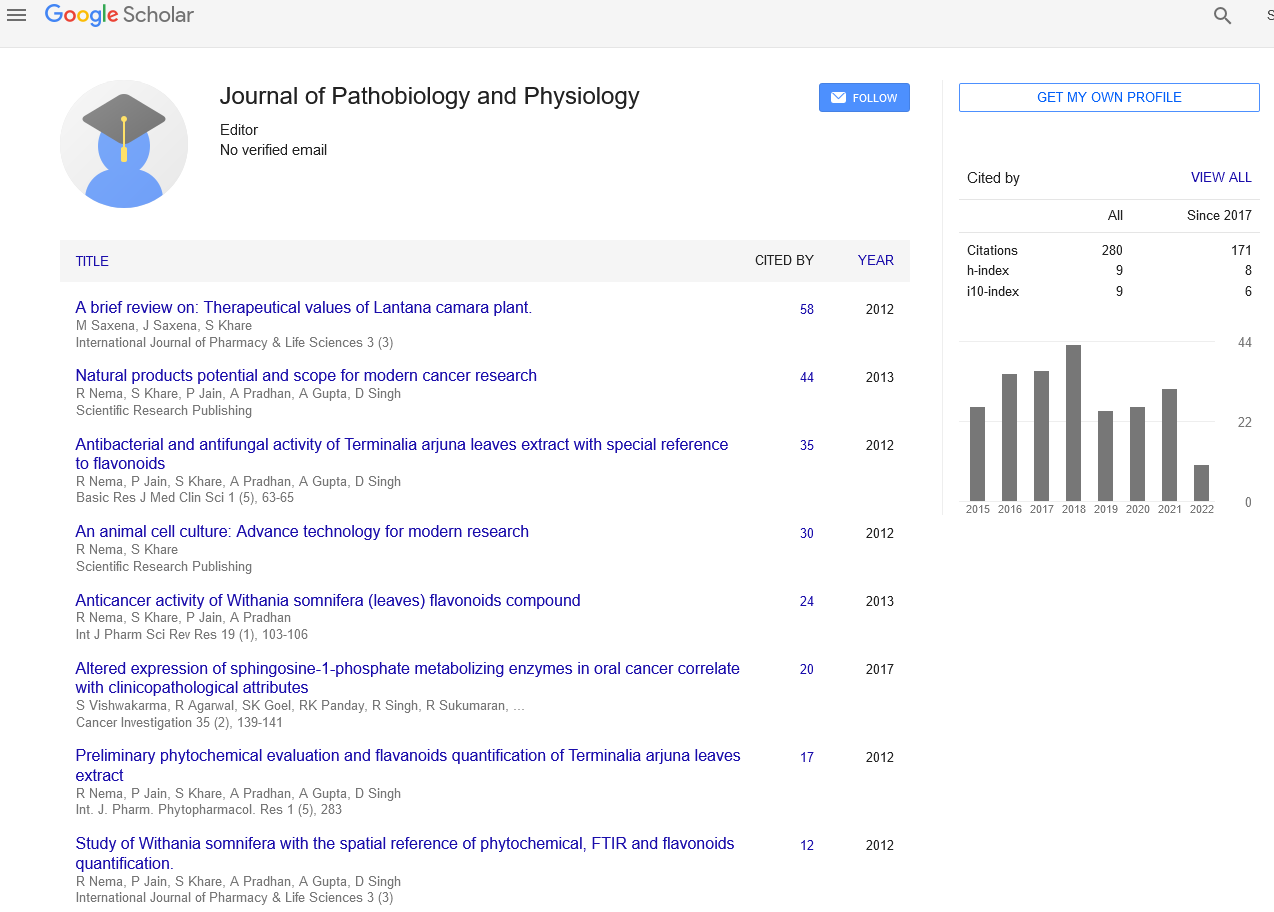Exam of Tissue with an Electron Microscope
Received: 06-Jun-2021 Accepted Date: Jun 20, 2021; Published: 27-Jun-2021
This open-access article is distributed under the terms of the Creative Commons Attribution Non-Commercial License (CC BY-NC) (http://creativecommons.org/licenses/by-nc/4.0/), which permits reuse, distribution and reproduction of the article, provided that the original work is properly cited and the reuse is restricted to noncommercial purposes. For commercial reuse, contact reprints@pulsus.com
Introduction
Anatomical pathology (Commonwealth) or Anatomic pathology (U.S.) is a medical distinctiveness that is involved with the prognosis of disease based at the macroscopic, microscopic, biochemical, immunologic and molecular examination of organs and tissues. Over the past century, surgical pathology has advanced notably: from historic examination of complete our bodies (autopsy) to a greater modernized exercise, focused at the analysis and analysis of most cancers to manual treatment choice-making in oncology. Its contemporary founder was the Italian scientist Giovani Battista Morgagni from Forlì. Anatomical pathology is one in all two branches of pathology, the opposite being scientific pathology, the prognosis of disease thru the laboratory analysis of bodily fluids or tissues. Often, pathologists practice each anatomical and clinical pathology, an aggregate called well-known pathology. Comparable specialties exist in veterinary pathology. Anatomic pathology relates to the processing, examination, and prognosis of surgical specimens by a doctor educated in pathological analysis. scientific pathology is the division that procedures the take a look at requests greater familiar to the majority; which include blood mobile counts, coagulation research, urinalysis, blood glucose level determinations and throat cultures. Its subsections include chemistry, haematology, microbiology, immunology, urinalysis and blood bank. Anatomical pathology is itself divided in subspecialties, the principle ones being surgical pathology (breast, gynaecological, endocrine, gastrointestinal, genitourinary, smooth tissue, head and neck, dermatopathology), neuropathology, hematopathology cytopathology, and forensic pathology. To be licensed to practice pathology, one has to complete medical college and at ease a license to exercise medication. An authorized residency program and certification (within the U.S., the Yankee Board of Pathology or the American Osteopathic Board of Pathology) is normally required to reap employment or clinic privileges. The examination of diseased tissues with the bare eye. That is critical particularly for large tissue fragments, because the sickness can frequently be visually diagnosed. It is also at this step that the pathologist selects areas to be able to be processed for histopathology. The eye can once in a while be aided with a magnifying glass or a stereo microscope, especially when examining parasitic organisms the microscopic examination of stained tissue sections the usage of histological strategies. The standard stains are haematoxylin and eosin, but many others exist. The use of haematoxylin and eosin-stained slides to provide precise diagnoses based on morphology is taken into consideration to be the middle ability of anatomic pathology. The technology of staining tissues sections is referred to as histochemistry. Using antibodies to detect the presence, abundance, and localization of particular proteins. This approach is essential to distinguishing among disorders with comparable morphology, in addition to characterizing the molecular houses of positive cancers. The exam of free cells unfolds and stained on glass slides using cytology strategies. Electron microscopy – the exam of tissue with an electron microscope, which allows lots extra magnification, permitting the visualization of organelles inside the cells. Its use has been largely supplanted by using immunohistochemistry, but it's far still in commonplace use for sure obligations, which includes the prognosis of kidney disorder and the identity of immotile cilia syndrome. The visualization of chromosomes to perceive genetic defects such as chromosomal translocation Floimmuno phenol typing the dedication of the immune phenotype of cells the usage of float cytometry strategies. it is very beneficial to diagnose the distinct types of leukemia and lymphoma. Cytopathology is a sub-subject of anatomical pathology concerned with the microscopic exam of complete, person cells obtained from exfoliation or exceptional-needle aspirates. Cytopathologists are educated to carry out exceptional-needle aspirates of superficially located organs, hundreds, or cysts and are often able to render a direct diagnosis in the presence of the patient and consulting health practitioner. Within the case of screening exams which includes the Papanicolaou smear, non-physician cytotechnologists are often hired to perform preliminary critiques, with most effective high-quality or uncertain instances tested by the pathologist.





